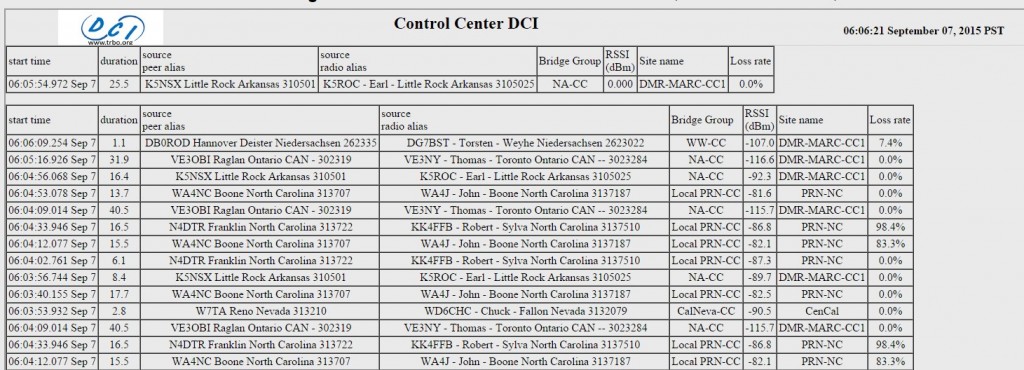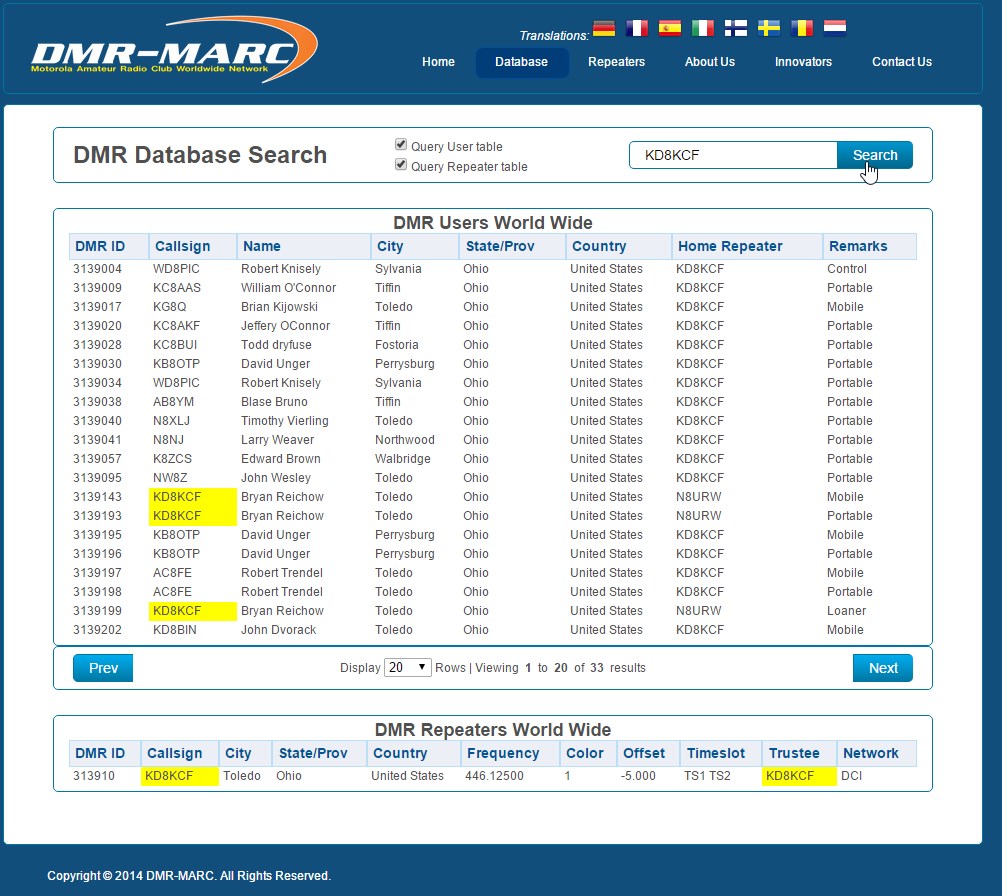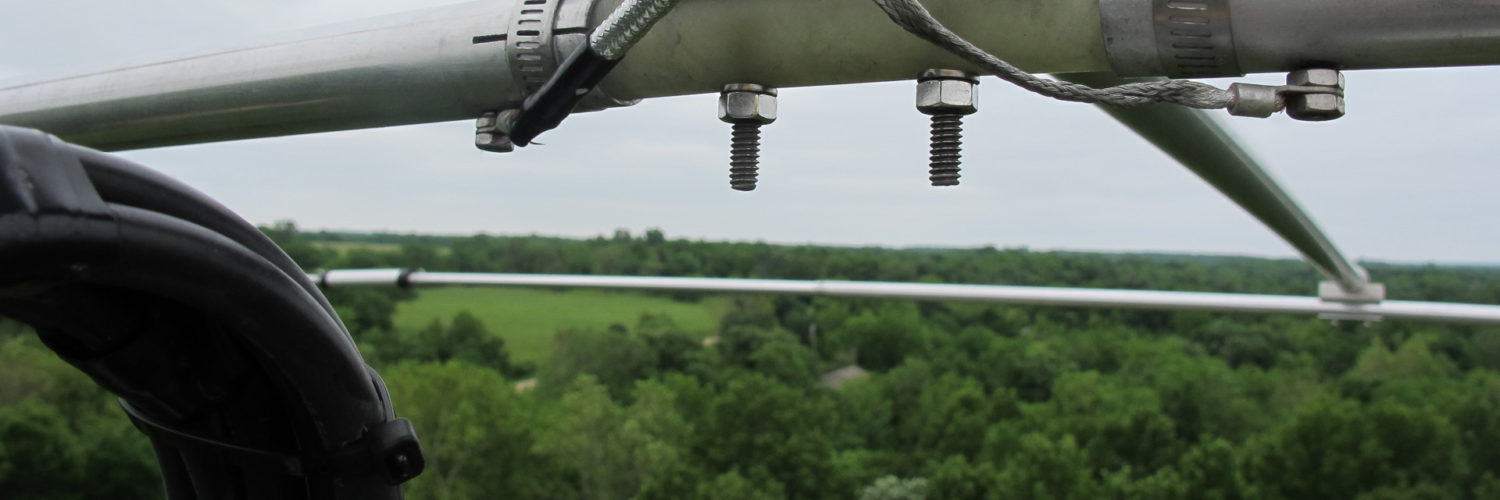Additional reading
The following sites contain a wealth of information and will additionally expose you to two of the networks used to link together individual repeaters.
- VA3XPR Website
- DCI MotoTRBO IPSC Amateur Radio Group
- Motorola Amateur Radio Club Worldwide Network
- The DMR Association
How active is your area
As a radio requires a 7 digit ID and associated owner information to participate in the network. Activity on the network can then be identified back to a user and a repeater. This is very helpful as it provides a record of who is accessing the system, what repeater they are using, the talk group and the RSSI (signal quality).

In order to determine if the traffic observed on the Netwatch is available on your local repeaters. Visit DMR-MARC and trbo.org and locate the machines in your area. The repeater listing will contain a listing of what full time or user activated (UA) talk groups the repeater is configured for.
To gain visibility of how many of your fellow hams are registered in the area. The DMR-MARC database page allows free form queries. In the image below I searched on a random repeater and in the results the repeater and those stations which identified KD8KCF as their home Repeater when their DMR ID was registered is listed.

That is all for now, if you are unfamiliar with DMR and want to learn more take a look at a couple of the websites I have listed above and watch the Newwatch pages for a bit. The next big piece is operating the gear and developing a codeplug, which is jargon for the radio config. I will cover all of that in my upcoming MD-380 review.
73’s Until next time, Jay

Leave a Reply